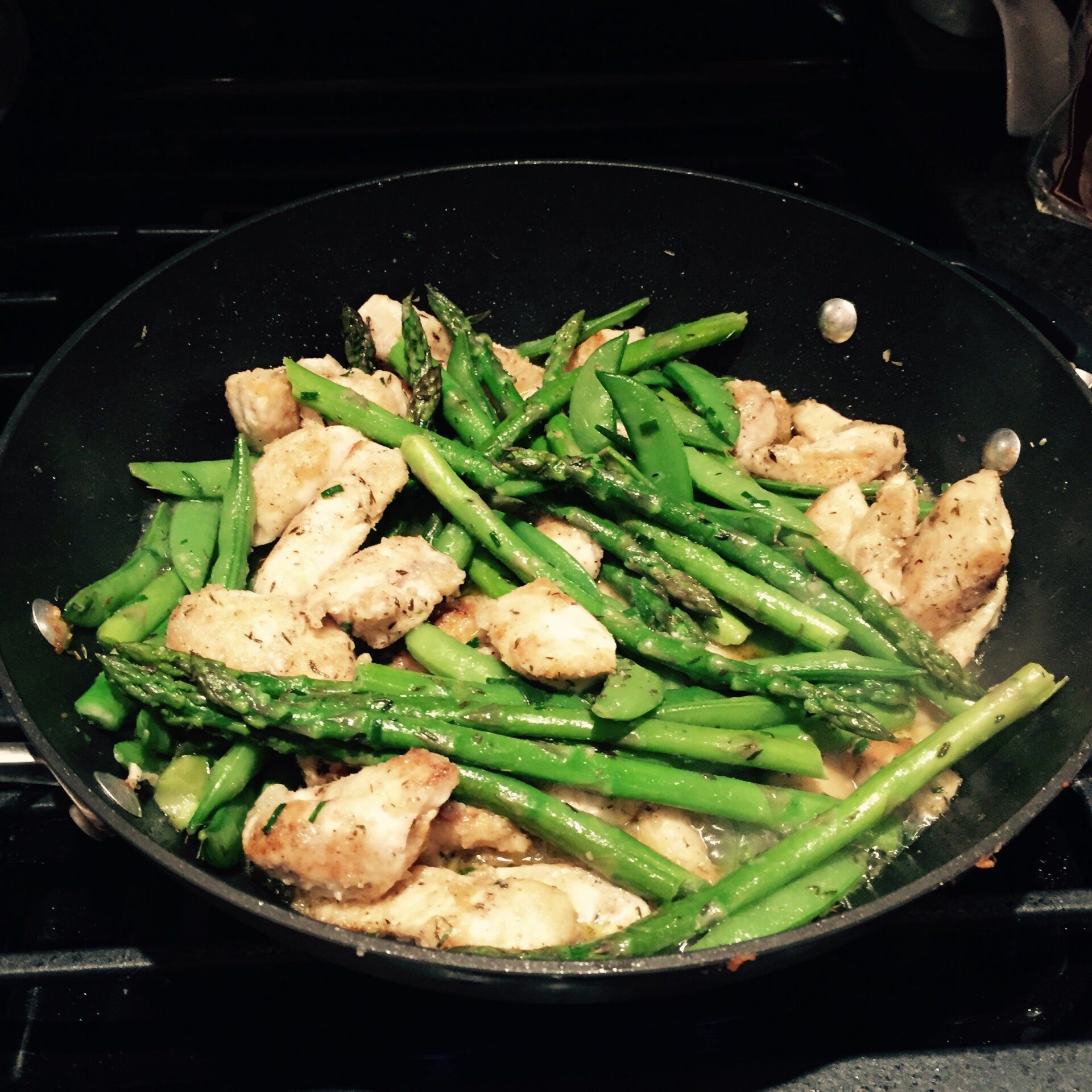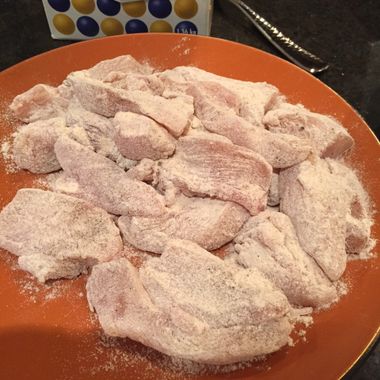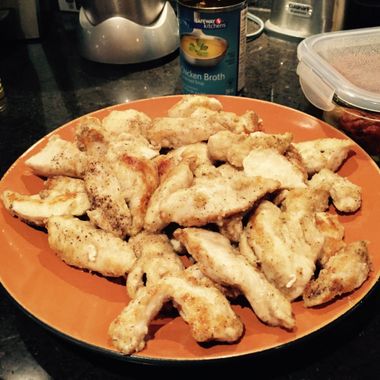CHICKEN TENDERS, SUGAR SNAP PEAS AND ASPARAGUS
Adult Rating: 5 out of 6
Kids Rating: 6 out of 6
Kids love the chicken tenders but not so much the vegetables.
Serves: 2
- I am proud to say that all of the recipes on my blog are Gluten Free.
CHICKEN TENDERS, SUGAR SNAP PEAS AND ASPARAGUS
Notes: Tastes best fresh and not so much as leftovers as the vegetables get soggy.
Source: Williams-Sonoma (modified to be kid friendly and gluten free)
Ingredients:
Robin Hood Gluten free All-purpose flour for dredging
10 oz. chicken tenders
Coarse kosher salt and freshly ground pepper, to taste
2 Tbs. olive oil
1 bunch asparagus
1/2 lb. sugar snap peas
1 cup gluten free chicken broth (I use Safeway Brand broth or Kitchen Basics)
1 Tbs. chopped fresh thyme
1 Tbs. sliced fresh chives
Splash of Lemon juice
Directions:
Spread flour on a plate. Cut the chicken tenders in half crosswise. Season the chicken with salt and pepper, then dredge in the flour.
In a large nonstick fry pan over medium-high heat, warm 1 Tbsp. of the olive oil. Add the chicken and sauté until just cooked through, about 5 minutes. Transfer to a plate.
Add the remaining 1 Tbsp. olive oil to the pan and reduce the heat to medium. Add the asparagus and sauté for 1 minute. Add the sugar snap peas and increase the heat to medium-high. Season the vegetables with salt and pepper and sauté for 1 minute. Add the chicken broth and mix well. Cover the pan and boil until the vegetables are almost crisp-tender, about 3 minutes.
Return the chicken to the pan. Add the thyme and the chives and a splash of lemon juice. Simmer uncovered, stirring almost constantly, until the sauce thickens and coats the chicken, about 2 minutes. Adjust the seasonings with salt and pepper. Serve.
Quick Tips: This recipe is a basic format for a quick sauté and lends itself to endless variations, so you can use what’s on hand in your refrigerator. Tarragon or basil would make tasty substitutes for the thyme (if using tarragon, use a little less). Fresh peas are a good alternative to the sugar snap peas, and zucchini can replace the asparagus.
SHARE THIS ARTICLE
RECENT POSTS















